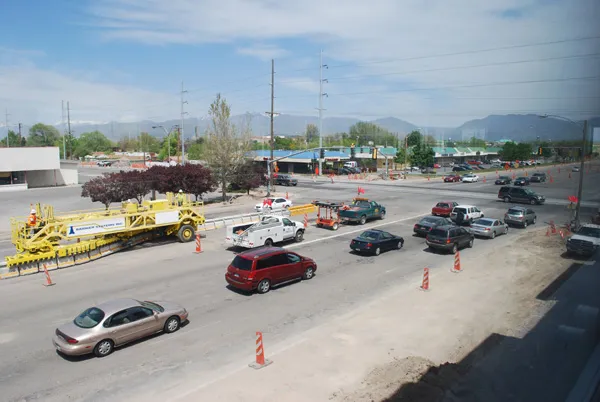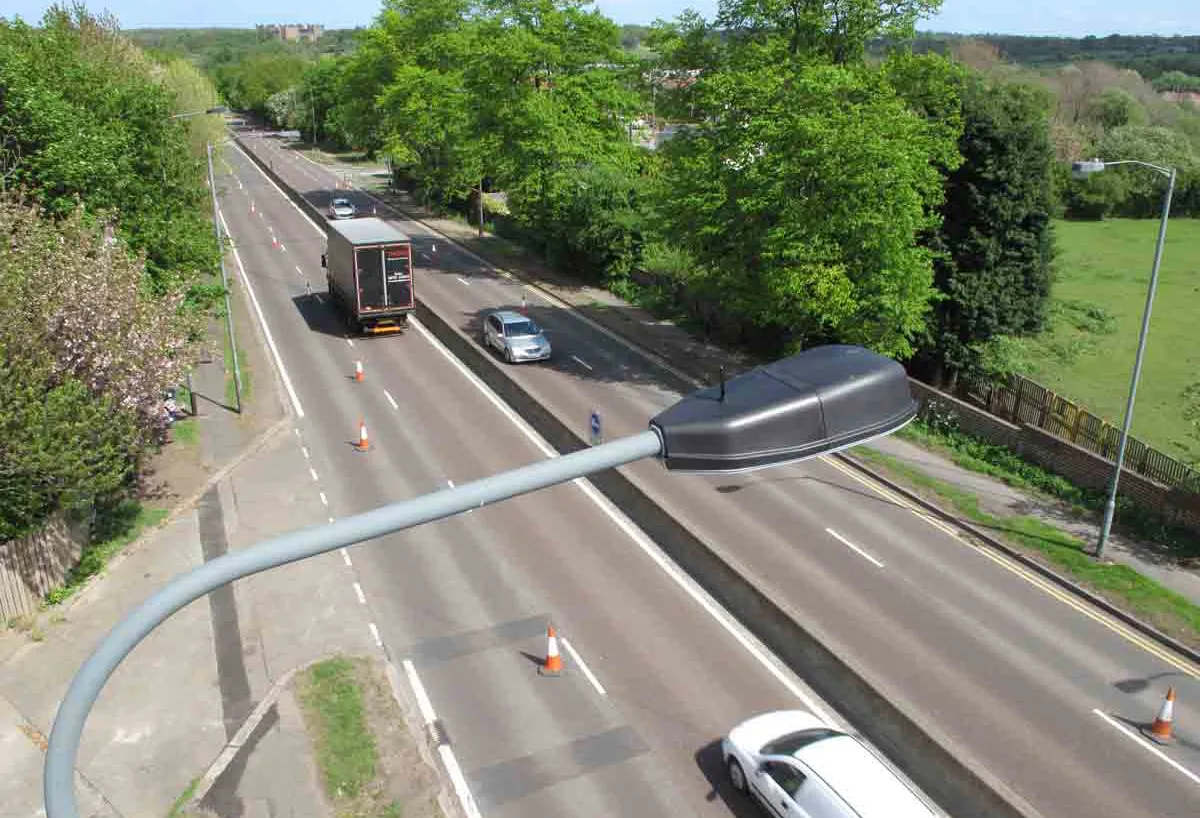ERF has launched a position paper to advocate better maintenance of Europe’s traffic signs. Vertical signage is an essential element not only of a modern and well-maintained road infrastructure, but also of a safe and functional road network. Road signs help regulate traffic, provide crucial visual guidance and give drivers important preview especially during night-time conditions. Well maintained and efficient signage becomes even more necessary when taking into account the ageing population of Europe, in
March 21, 2016
Read time: 4 mins

ERF has launched a position paper to advocate better maintenance of Europe’s traffic signs
Vertical signage is an essential element not only of a modern and well-maintained road infrastructure, but also of a safe and functional road network. Road signs help regulate traffic, provide crucial visual guidance and give drivers important preview especially during night-time conditions.
Well maintained and efficient signage becomes even more necessary when taking into account the ageing population of Europe, in combination with the increasing cross-border traffic and the advancement of existing and new technologies. As the needs of European road users change over time, road infrastructure needs to keep up, if not lead.
In view of this, the7575 ERF launched in November its position paper entitled “Improved Signage for better Roads: An ERF Position Paper towards improving Traffic Signs in European Roads”. This ERF position paper is addressed to a broad range of stakeholders and seeks to identify key actions that ERF and its members believe should be prioritised so that traffic signs can continue serving the needs of Europe’s road users.
“Improved Signage for better Roads” position paper advocates, first of all, for authorities to avoid or tackle the proliferation of traffic signs and to ensure that those installed display a clear message. This will achieve better road safety and ease traffic flow, not to mention make good use of public resources.
“It is clear that in is some cases, road authorities have placed too many traffic signs in specific junctions,” said Konstandinos Diamandouros, head of office at the ERF. “This not only represents a waste of limited public resources, moreover it risks having exactly the opposite effect of what traffic signs are intended to do by causing confusion for oncoming drivers. This, nevertheless, does not alleviate the need for road authorities to take serious steps to tackle a chronic lack of maintenance in traffic signs.”
According to the position paper, in some large European countries, such as France and Germany, more than one-third of traffic signs are unfit for purpose.
The second recommendation is for road authorities to set up a multi-year maintenance action plan. This could be either a comprehensive asset management plan or the replacement of traffic signs at fixed intervals. New dynamic monitoring technologies are being developed by market players that enable authorities to assess the condition of traffic sign retroreflectivity. Tis will allow them to make interventions when needed.
It is expected that such solutions will become less expensive and more widespread in the future. Should authorities choose to wait for these technologies to mature, they can, nevertheless, effectively maintain traffic signs by replacing them in line with the manufacturers’ guarantee, a practice which is, for example, followed in the Netherlands.
Thirdly, ERF advocates adapting to the needs of an ageing driver population by introducing minimum maintenance standards for safety-critical signs, as under the Vienna Convention. Older drivers have reduced visual capacity and often require higher performance in terms of retroreflectivity so they can clearly perceive traffic signs and react in a timely and appropriate manner.
Japan, which has the world’s most rapidly ageing population, is already advocating for such measures as set out in its 2004 White Paper on Transport as a means to reduce the high frequency of fatalities of drivers aged 65 and over. The recommendation argues for the establishment of a minimum class II for all safety critical signs under the Vienna convention, i.e. Class A (Danger Warning Signs), Class B (Priority Signs) and Class C (Prohibitory or Restrictive Signs).
Last but not least, this position paper calls for all stakeholders to examine the benefits of greater harmonisation of signs within the Vienna Convention. This could maximise the safety benefits of new vehicle technologies such as Intelligent Speed Adaptation as well provide a more familiar environment for increasing cross-border traffic volumes. A recent report published by777 TRL on behalf of the European Commission entitled ‘Benefits and Feasability of a Range of New Technologies ad Unregulated Measures in the Field of Occupant Safety and Protection of Vulnerable Road Users’ found Intelligent Speed Assistance to be one of the most cost-effective technologies on the market.
“According to the European Transport Safety Council, the application of Intelligent Speed Assistance could bring about a reduction in crashes of 30% and an equivalent reduction in fatalities of 20%,” explained Diamandouros. “In this context, it is not only imperative that traffic signs are well maintained, but essential that we examine how the application of the Vienna Convention across member states can become increasingly uniform to ensure more consistency for both drivers and the intelligent vehicle.”
The ERF position paper can be found on the ERF’s web page, by clicking on publications. Contact person: Konstandinos Diamandouros, %$Linker:2 Email <?xml version="1.0" encoding="utf-16"?><dictionary /> 0 0 0 oLinkEmail [email protected] email [email protected] false mailto:[email protected] true false %>
Vertical signage is an essential element not only of a modern and well-maintained road infrastructure, but also of a safe and functional road network. Road signs help regulate traffic, provide crucial visual guidance and give drivers important preview especially during night-time conditions.
Well maintained and efficient signage becomes even more necessary when taking into account the ageing population of Europe, in combination with the increasing cross-border traffic and the advancement of existing and new technologies. As the needs of European road users change over time, road infrastructure needs to keep up, if not lead.
In view of this, the
“Improved Signage for better Roads” position paper advocates, first of all, for authorities to avoid or tackle the proliferation of traffic signs and to ensure that those installed display a clear message. This will achieve better road safety and ease traffic flow, not to mention make good use of public resources.
“It is clear that in is some cases, road authorities have placed too many traffic signs in specific junctions,” said Konstandinos Diamandouros, head of office at the ERF. “This not only represents a waste of limited public resources, moreover it risks having exactly the opposite effect of what traffic signs are intended to do by causing confusion for oncoming drivers. This, nevertheless, does not alleviate the need for road authorities to take serious steps to tackle a chronic lack of maintenance in traffic signs.”
According to the position paper, in some large European countries, such as France and Germany, more than one-third of traffic signs are unfit for purpose.
The second recommendation is for road authorities to set up a multi-year maintenance action plan. This could be either a comprehensive asset management plan or the replacement of traffic signs at fixed intervals. New dynamic monitoring technologies are being developed by market players that enable authorities to assess the condition of traffic sign retroreflectivity. Tis will allow them to make interventions when needed.
It is expected that such solutions will become less expensive and more widespread in the future. Should authorities choose to wait for these technologies to mature, they can, nevertheless, effectively maintain traffic signs by replacing them in line with the manufacturers’ guarantee, a practice which is, for example, followed in the Netherlands.
Thirdly, ERF advocates adapting to the needs of an ageing driver population by introducing minimum maintenance standards for safety-critical signs, as under the Vienna Convention. Older drivers have reduced visual capacity and often require higher performance in terms of retroreflectivity so they can clearly perceive traffic signs and react in a timely and appropriate manner.
Japan, which has the world’s most rapidly ageing population, is already advocating for such measures as set out in its 2004 White Paper on Transport as a means to reduce the high frequency of fatalities of drivers aged 65 and over. The recommendation argues for the establishment of a minimum class II for all safety critical signs under the Vienna convention, i.e. Class A (Danger Warning Signs), Class B (Priority Signs) and Class C (Prohibitory or Restrictive Signs).
Last but not least, this position paper calls for all stakeholders to examine the benefits of greater harmonisation of signs within the Vienna Convention. This could maximise the safety benefits of new vehicle technologies such as Intelligent Speed Adaptation as well provide a more familiar environment for increasing cross-border traffic volumes. A recent report published by
“According to the European Transport Safety Council, the application of Intelligent Speed Assistance could bring about a reduction in crashes of 30% and an equivalent reduction in fatalities of 20%,” explained Diamandouros. “In this context, it is not only imperative that traffic signs are well maintained, but essential that we examine how the application of the Vienna Convention across member states can become increasingly uniform to ensure more consistency for both drivers and the intelligent vehicle.”
The ERF position paper can be found on the ERF’s web page, by clicking on publications. Contact person: Konstandinos Diamandouros, %$Linker:








